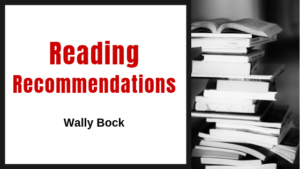My friend Al ran a dry goods store in the part of Ohio we now call “The Rust Belt.” People who knew Al thought he was an oracle because he always seemed to know what would happen next. He did, but it wasn’t magic, it was a different way of seeing.
Al didn’t base his predictions on sophisticated, quantitative analysis. He checked the parking lots at nearby auto plants. When there were fewer cars there during the day, he knew the company was cutting back preparatory to a big layoff. So, he cut back on his orders.
Anthro-Vision by Gillian Tett is about developing a different way of seeing. This is not different, “instead of” it’s different “in addition to.” Anthro-Vision is about using the tools of anthropology to develop insights that help you learn more from quantitative analysis.
Why this book is important
Throughout the 20th century, we developed tools that help us examine the world in a logical, quantitative way. They’ve provided great insights, but they’re not enough by themselves to understand the world around us.
Qualitative measures can provide context and texture. The problem is that we don’t know how to do them. Management courses are long on quantitative and short on qualitative. Gillian Tett wants us to use the tools of anthropology to provide qualitative insights.
The book is divided into three main sections. The first two describe the principles of Anthro-Vision. The third shares several examples from “the Real World.”
Make the Strange Familiar
We’re comfortable when things are familiar. We’re at ease when the people around us think and act as we do. We shy away from things that seem strange. Increasingly, though we deal with people who have different histories, cultures, and values. We can work better with those people if we understand them. Anthro-Vision is a way to do that.
Make the Familiar Strange
“Know thyself” was the advice carved in stone at the Temple of Apollo at Delphi. Centuries later, Robert Burns suggested the way to that knowing.
“O wad some Pow’r the giftie gie us, To see oursels as ithers see us!”
With Anthro-Vision tools we can turn the lens around and see ourselves as others see us. This also works on an organizational level. When you look at an organization through different eyes, you see things that should be changed more clearly.
Listening to Social Science
Anthro-Vision should add to other analyses, not substitute for them. This section of the book includes examples of specific situations. You’ll pick up insights on the election of Donald Trump, Xerox PARC, working from home, globalization, and Amazon (the company, not the jungle).
Anthro-Vision is neither an academic treatise nor a how-to book. It’s about adding a set of tools to your kit so that you can see the world around you more clearly. If you use the tools, you will add powerful qualitative insights to your quantitative ones.
This book doesn’t close the learning loop. It’s a broad introduction to using anthropological tools in life and business. To make the most of this book you’ll need to search elsewhere for some how-tos and cobble together your own learning and application program. You may be inspired by the possibilities, but there’s nothing in the book that will help you achieve them.
When you finish this book, you have two options. One is to say, “Wow! Great book” and move on to other things. The other is to figure out how to develop an Anthro-Vision mindset. That won’t be straightforward or easy.
In a Nutshell
Anthro-Vision is about a mindset change. You’ll learn how the tools of anthropology can help you become a more effective leader and human being. Alas, you won’t learn much about how to select which tool to use or how to use it. You get a view of the Promised Land, but you don’t get any help figuring out how to cross the river and get there.
Companion Reads
The WEIRDest People in the World: How the West Became Psychologically Peculiar and Particularly Prosperous by Joseph Henrich
Leading in the Digital World: How to Foster Creativity, Collaboration, and Inclusivity by Amit S. Mukherjee
The Social Life of Information by John Seely Brown and Paul Duguid
You can check out some of my highlights and notes from this book on GoodReads.
-o0o-
What’s the fastest way to learn the big ideas from a great business book? Book summaries. Check out summaries from The Business Source, where you can watch, read, or listen to the big ideas from a great book in under 20 minutes.



There are no comments yet, why not be the first to leave a comment?